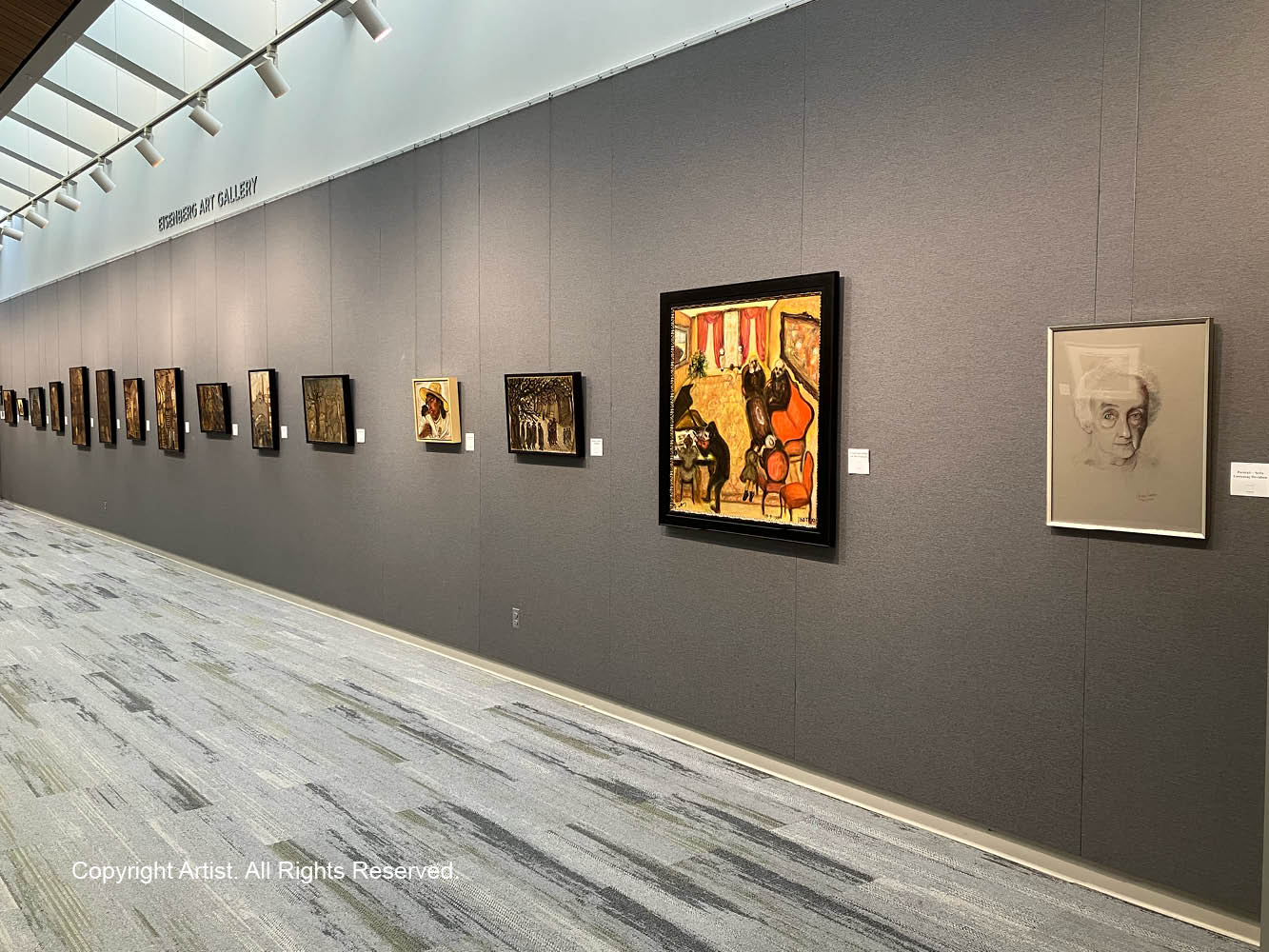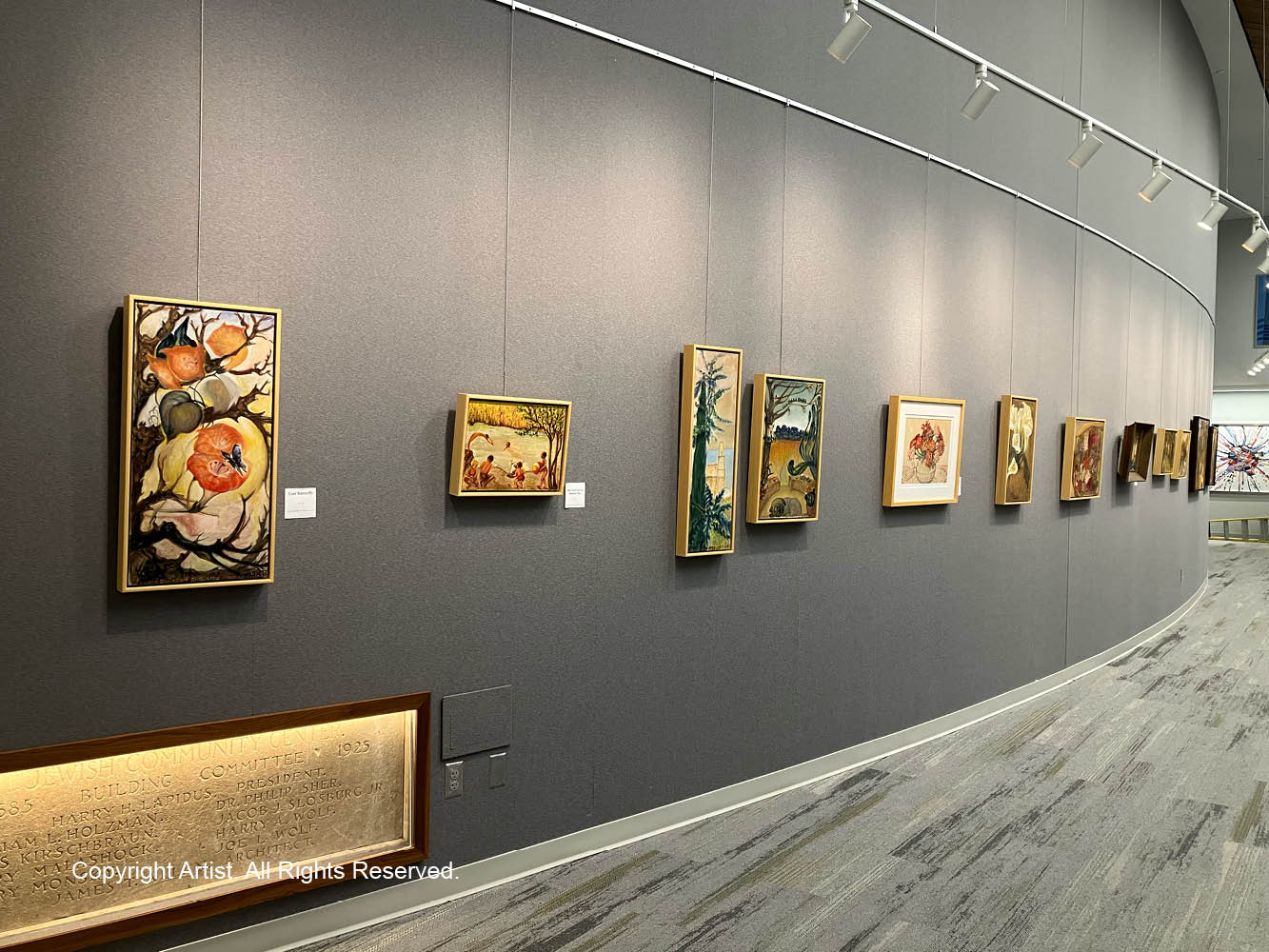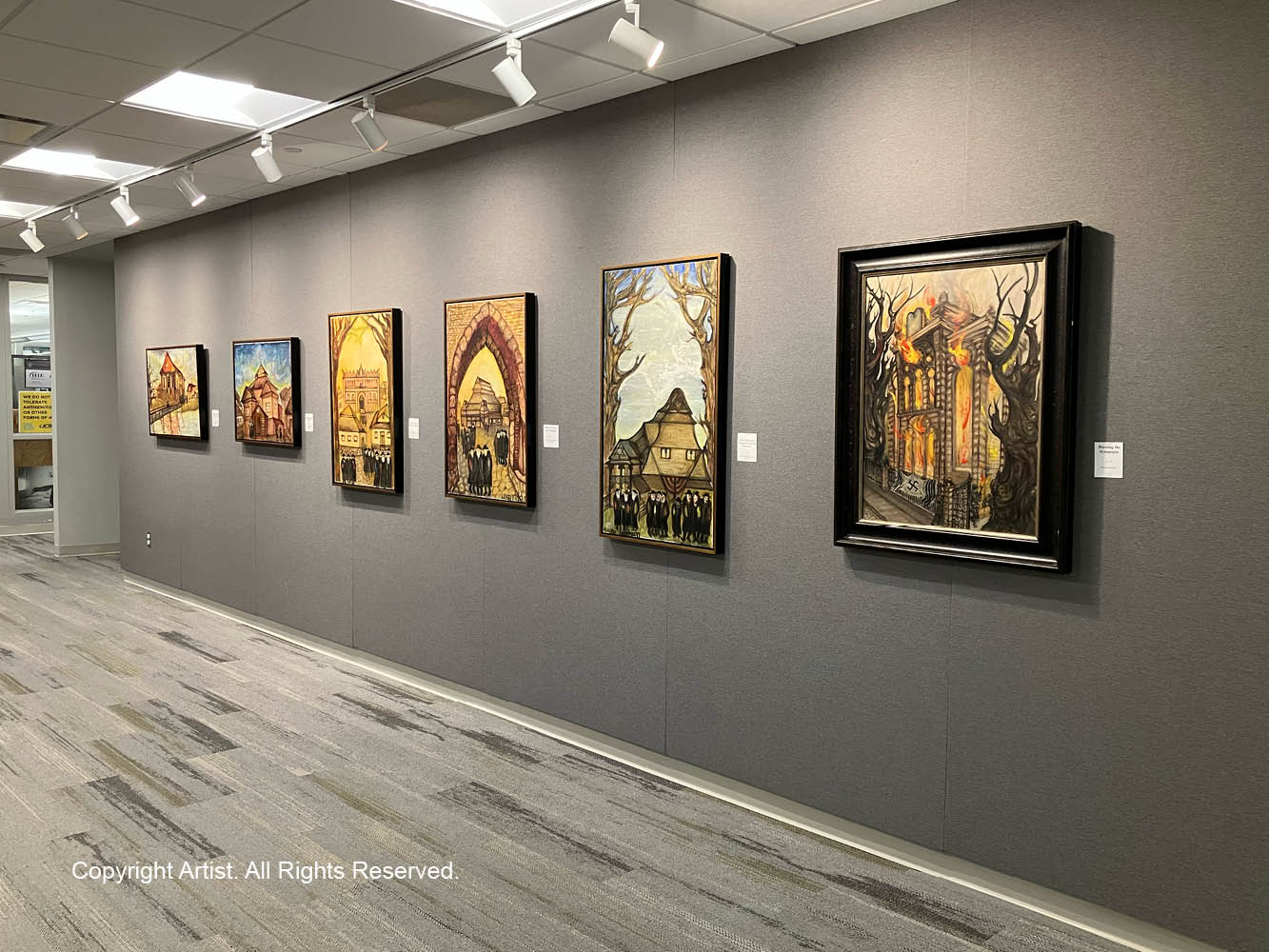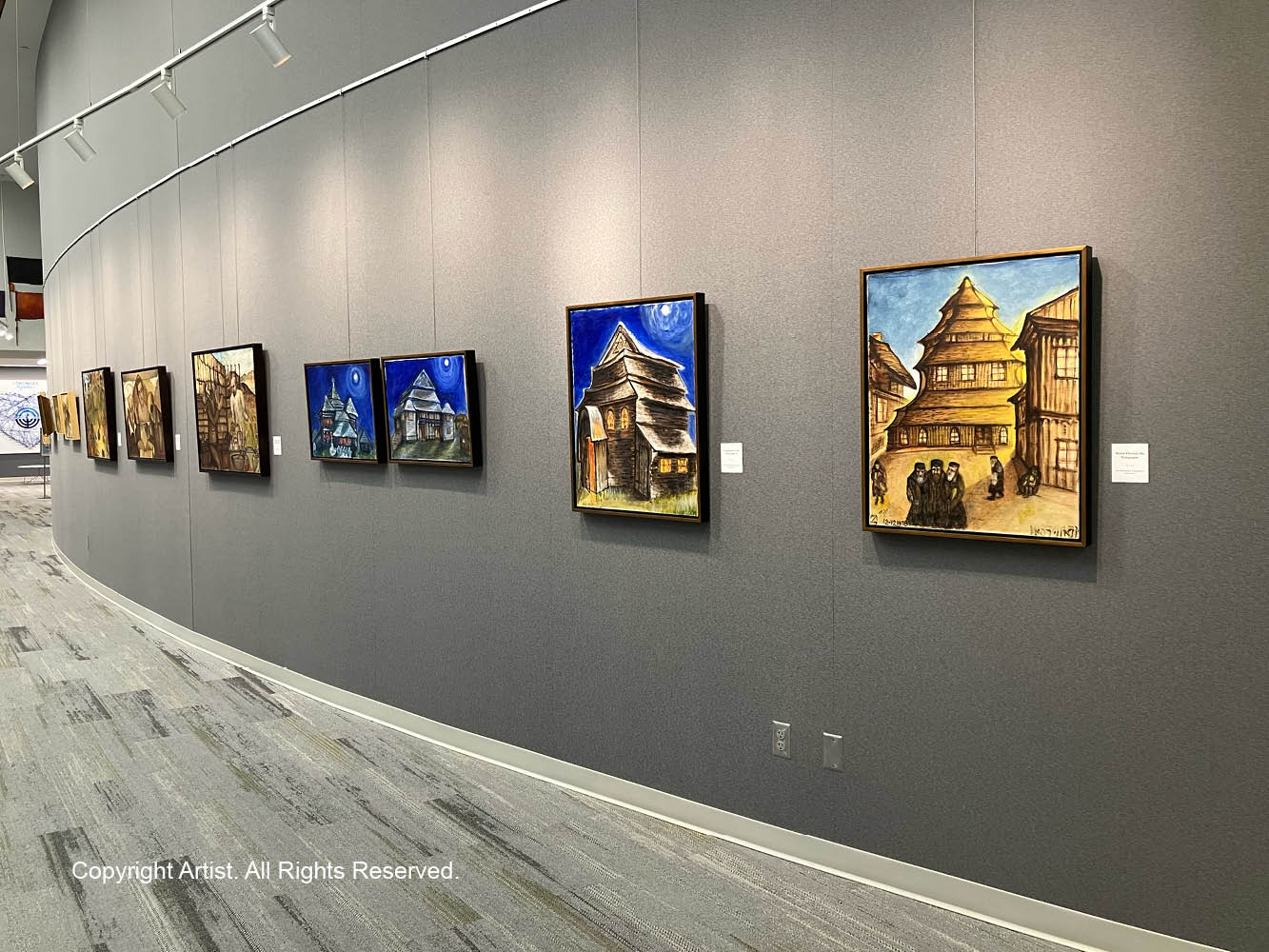
Eisenberg Gallery at the J
From historical and educational exhibits to beautiful displays of local, national, and international art, the Eisenberg Gallery at the J hosts a wide array of content. Exhibits cycle through on a monthly basis, providing a constant stream of new material. Admission is free. The gallery is open to the public. All visitors must check in with the Front Desk receptionist.
November 1-28
The Sofia Davidson Art Collection
Brought to you by the Goldrich Family Foundation and the Institute for Holocaust Education
Gallery Hours
Monday – Thursday
5:00 a.m. – 9:00 p.m.
Friday
5:00 a.m. – 7:00 p.m.
Saturday – Sunday
7:30 a.m. – 7:00 p.m.
Admission: FREE
Open to the public.
All guests must check in with
the Front Desk receptionist.




The Sofia Davidson Art Collection
Holocaust survivor, Sofia Davidson, was resilient soul who defied the darkness of her past through art. Born in 1893, Sofia was a very gifted artist from a young age. She studied art in Switzerland and Germany before becoming a professor of art in Poland. This was a remarkable achievement for the time, not only because she was a woman, but more so because she was a Jewish woman.
After the German invasion of Poland in 1939, Sofia and her daughter fled, narrowly escaping the horrors that would soon engulf her homeland. Their path to freedom led through Russia, Israel, and eventually Mexico.
Through it all, Sofia’s art was her lifeline. In the bleakest of times, even when hope seemed distant, she found solace in creation. She transformed her pain into colors, shapes, and stories. Each brushstroke became an act of defiance against despair. Each piece of artwork became a testament to her determination to heal. The resulting collection is Sofia’s unspoken story.
The Sofia Davidson Collection is a realistic embodiment of the “quiet trauma” etched into the souls of so many Jewish survivors. This collection aims to acknowledge that the unspoken stories hold equal importance to the history of the Holocaust as do the outspoken stories frequently shared with the world. Learn more at sofiadavidsoncollection.org
Special Event!
Thursday, November 20
11:30 am via Zoom
Join the Institute for Holocaust Education (IHE) for its Third Thursday Lunch & Learn program as we continue the conversation on Sofia Davidson and her lasting impact. This special session will feature Suzanne Horwich, Consulting Curator for the Goldrich Family Foundation’s Sofia Davidson Collection, and Helen Pankowsky, granddaughter of Jona Goldrich. Together, they will explore Davidson’s powerful work and the enduring role of Holocaust education through art.
To receive the Zoom link, please contact Scott Littky, IHE Executive Director, at slittky@ihene.org.

